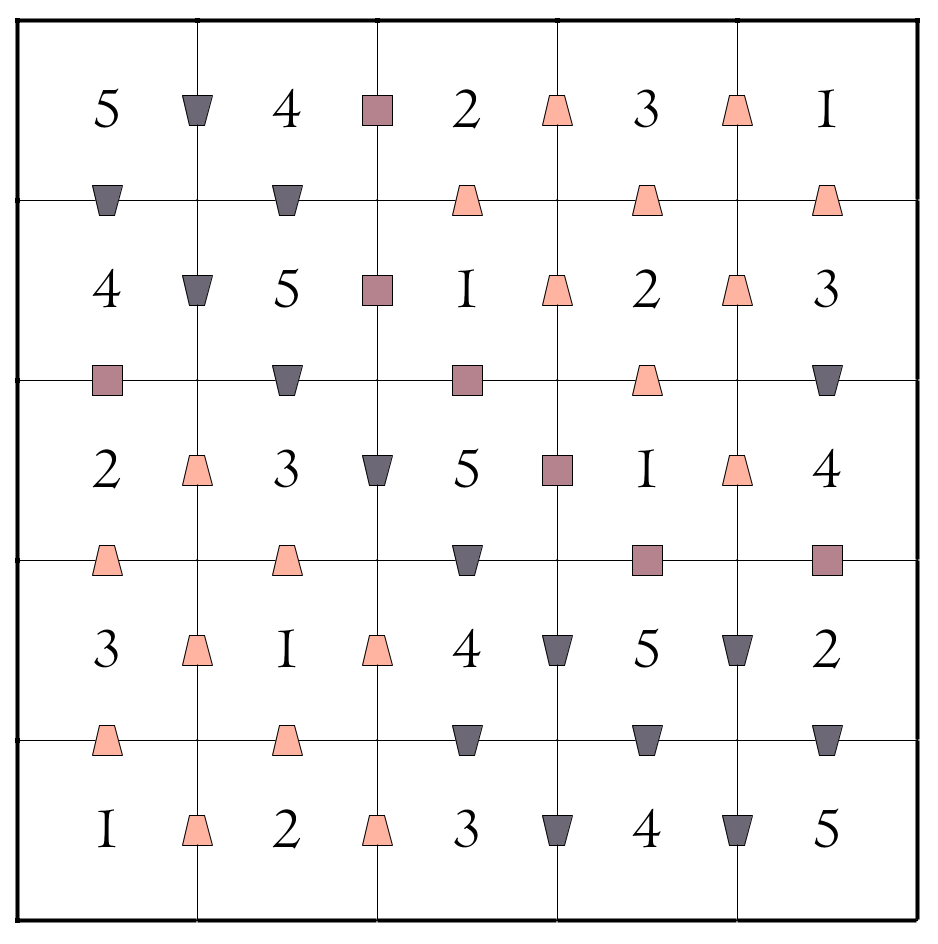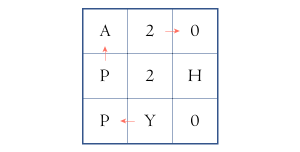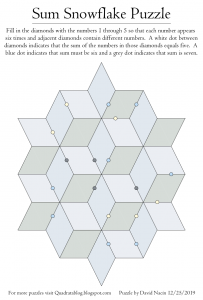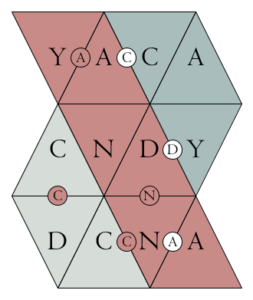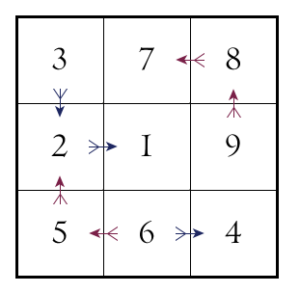Mean Squares
For these puzzles we need to fill in the cells with the numbers 1 through 5 so that each number appears exactly once in every row and column. The clues here are all based around the average or mean of the numbers in adjacent cells. A bottom heavy trapezoid indicates the mean is less than three, a top heavy one indicates it is greater than three, and a square indicates it is exactly three. Some clues are deliberately left out in order to increase the difficulty in the later puzzles.
Here is a completed sample puzzle to provide a visual aid as to how these clues work:
